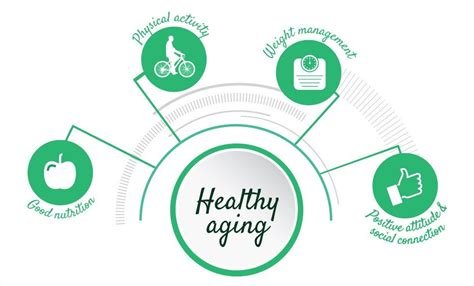The Ultimate Guide to Anti-Inflammatory Diets explores the essential components of reducing inflammation through diet. It begins with an introduction to anti-inflammatory diets, outlining their benefits and key principles. The article identifies the ultimate foods to include, such as fruits, vegetables, and healthy fats, and provides practical steps for transitioning to this lifestyle. Readers will find helpful dos and don’ts, alongside an analysis of how these diets impact bodily functions. Additionally, it addresses common challenges faced when adopting an anti-inflammatory diet, supplemented by real-life success stories and expert opinions on current trends. Concluding with key takeaways, this guide serves as a comprehensive resource for anyone looking to embark on their anti-inflammatory journey.
Introduction To Anti-Inflammatory Diets: What You Need To Know
Anti-inflammatory diets are designed to reduce chronic inflammation, which plays a significant role in various health issues such as heart disease, diabetes, and arthritis. By focusing on whole, nutrient-rich foods, these diets aim to not only combat inflammation but also promote overall well-being. Understanding the fundamentals of an anti-inflammatory diet can empower you to make informed choices toward enhancing your health.
Implementing the ultimate anti-inflammatory diet involves recognizing both the foods that contribute to inflammation and those that can alleviate it. This approach emphasizes the consumption of fruits, vegetables, whole grains, lean proteins, and healthy fats. By shifting your dietary habits, you can not only support your body’s natural defenses but also improve your energy levels and mental clarity.
- Key Benefits of Anti-Inflammatory Diets
- Reduced risk of chronic diseases
- Improved heart health
- Enhanced brain function and mood
- Weight management support
- Promotion of digestive health
- Stronger immune system
Incorporating these elements effectively may seem overwhelming initially, but making gradual changes can lead to sustainable habits. Understanding which foods to prioritize is essential when making dietary shifts. As you embark on the ultimate journey toward an anti-inflammatory lifestyle, consider not only what you eat but also the cooking methods and portion sizes that can maximize nutrient intake.
“Food is not just fuel; it’s information. It talks to your DNA and tells it what to do.”
By focusing on an anti-inflammatory diet, you are setting the stage for better long-term health outcomes. The investment in your diet today pays dividends in your quality of life tomorrow. It is important to keep in mind that success may take time, but the benefits you’ll reap are well worth the effort.
The Ultimate Foods To Include In Your Diet
When considering an anti-inflammatory diet, it’s essential to prioritize foods that help reduce inflammation while improving overall health. These foods not only provide necessary nutrients but also support bodily functions that can significantly reduce inflammation levels. One cannot underestimate the importance of choosing the right ingredients, as they form the foundation of The Ultimate dietary approach.
Incorporating these foods can lead to noticeable improvements in well-being. You’ll start to feel the benefits as they help bolster your immune system and prevent diseases related to chronic inflammation. Always remember, these foods should replace processed items in your pantry to truly see the benefits unfold. Below is a list of the most impactful foods you should consider integrating into your daily meals.
Top 5 Anti-Inflammatory Foods
- Fatty Fish (like salmon and mackerel)
- Berries (such as blueberries and strawberries)
- Leafy Greens (including spinach and kale)
- Nuts (specifically walnuts and almonds)
- Olive Oil (extra virgin for best results)
Incorporating these top five anti-inflammatory agents into your diet can create a remarkable difference in how your body responds to inflammation. Each component is rich in antioxidants, omega-3 fatty acids, and other vital nutrients that emphasize the essence of The Ultimate anti-inflammatory diet. Furthermore, transitioning towards whole foods will replace unhealthy eating habits that aggravate inflammation.
Lastly, be open to experimenting with meals and incorporating this powerful array of foods. As you explore new recipes, be mindful of how your body feels; maintaining a food diary can help you track improvements in mood and energy levels. The more you embrace these nutrient-dense ingredients, the closer you’ll get to achieving a healthier state, making this approach truly The Ultimate dietary choice for inflammation management.
Steps To Transition To An Anti-Inflammatory Diet
Transitioning to an anti-inflammatory diet can significantly enhance your overall health, but it can feel daunting at first. The goal is to shift your eating habits towards nutrient-dense foods while minimizing processed items. Focus on understanding which foods contribute positively to your health and learning how to incorporate them into your daily meals. Remember, this transition is a gradual process, and patience is key for long-term success.
5 Steps to Transition
- Assess your current diet: Start by documenting your daily eating habits to identify inflammatory foods.
- Research anti-inflammatory foods: Familiarize yourself with items like fruits, vegetables, whole grains, nuts, and healthy fats.
- Gradually replace foods: Implement changes slowly by substituting inflammatory items with healthier alternatives.
- Plan your meals: Create a weekly meal plan that focuses on anti-inflammatory ingredients to guide your shopping and cooking.
- Stay hydrated: Drinking enough water is fundamental to overall health and aids in reducing inflammation.
One of the most important aspects of this transition is to be adaptable and willing to experiment in the kitchen. Cooking can be both fun and rewarding, allowing you to discover new flavors that support an anti-inflammatory lifestyle. As many people already know, incorporating various colors of fruits and vegetables can also ensure you are receiving a broad spectrum of nutrients.
“Changing your diet does not need to be overwhelming; each small step contributes to a healthier you.”
In addition to changing your meals, consider how your lifestyle affects inflammation. Regular physical activity, adequate sleep, and stress management can play pivotal roles in your journey. By embracing these elements alongside your new eating habits, you are more likely to see improvements not just in reducing inflammation, but overall well-being.
Dos And Don’ts Of Anti-Inflammatory Diets
Incorporating an anti-inflammatory diet into your lifestyle can significantly impact your overall health and well-being. However, it’s essential to understand the ultimate guidelines to maximize the benefits of such a dietary approach. By following specific dos and avoiding certain don’ts, you can create a nutritious eating plan that helps reduce inflammation effectively.
One of the fundamental aspects of an anti-inflammatory diet is the selection of high-quality foods. It’s crucial to consume a variety of fruits, vegetables, whole grains, and healthy fats while minimizing processed foods. This not only supports your body’s needs but also allows you to enjoy diverse flavors and textures. Remember, consistency is key; adopting these practices as part of your daily routine will yield the best results over time.
Essential Dos And Don’ts
- Do: Opt for whole, unprocessed foods that are rich in antioxidants.
- Don’t: Rely heavily on refined sugars and trans fats.
- Do: Include fatty fish, nuts, and avocados for healthy fats.
- Don’t: Avoid excess consumption of red and processed meats.
- Do: Stay hydrated and consume plenty of water.
- Don’t: Neglect the importance of portion control.
- Do: Experiment with herbs and spices, such as turmeric and ginger, known for their anti-inflammatory properties.
Adhering to these dos and don’ts can make a significant difference in your anti-inflammatory journey. It’s important to remember that every individual’s body reacts differently to foods, so listening to your body and making adjustments as needed is vital. Consulting with a healthcare professional or a registered dietitian can also provide personalized guidance tailored to your specific needs.
How Anti-Inflammatory Diets Affect Your Body
Understanding how the ultimate anti-inflammatory diets impact your overall health is crucial for achieving optimal well-being. By reducing inflammation, which is often the root cause of various chronic diseases, these diets can bring about significant changes in your body. They focus on nutrient-dense, whole foods that provide essential vitamins and minerals, promoting both physical and mental health. The principles of such diets are not only about avoiding certain foods, but also about embracing a lifestyle conducive to balance and wellness.
One of the primary areas where anti-inflammatory diets play a crucial role is in digestive health. These diets emphasize the consumption of high-fiber foods, lean proteins, and healthy fats, which promote better digestion and gut microbiome diversity. A well-functioning digestive system leads to improved immune function, as about 70% of our immune system is located in the gut. Eating a variety of antioxidant-rich fruits and vegetables can also help reduce oxidative stress in the body, creating a healthier digestive environment.
Major Benefits Of Anti-Inflammatory Diets
- Reduces chronic inflammation.
- Improves skin health and reduces acne.
- Enhances heart health and lowers cholesterol.
- Boosts brain function and memory.
- Aids in weight management.
- Decreases joint pain and arthritis symptoms.
- Regulates blood sugar levels.
In addition to promoting digestive health, anti-inflammatory diets have significant effects on brain function. Chronic inflammation is linked to cognitive decline and neurodegenerative diseases, making it vital to incorporate anti-inflammatory foods into your diet. Consuming omega-3 fatty acids found in fatty fish and walnuts can enhance brain health and improve mental clarity. The ketogenic and Mediterranean diets are excellent frameworks that incorporate these healthy fats, providing a foundation for improved cognition and possibly lowering the risk of conditions like Alzheimer’s disease.
By understanding the profound impact of anti-inflammatory diets, individuals can take active steps towards better health, enhancing both lifespan and quality of life.
Challenges You Might Face With Anti-Inflammatory Diets
Adopting an anti-inflammatory diet can be an effective way to improve your overall health. However, The Ultimate approach to dietary changes often comes with its own set of challenges. These hurdles can affect your motivation and commitment to maintaining this dietary lifestyle. Understanding these potential challenges is crucial in navigating your journey effectively.
One common issue is the overwhelming amount of information available regarding anti-inflammatory foods and their benefits. Many individuals may struggle to identify which items they should focus on, leading to confusion. Moreover, transitioning from a traditional diet to one that emphasizes anti-inflammatory properties can be difficult, particularly if you have ingrained habits or cravings for processed foods.
- Lack of knowledge about suitable foods.
- Increased grocery bills due to a focus on fresh produce.
- Food preparation time often increases.
- Social situations where unhealthy foods are prevalent.
- Potential withdrawal symptoms from cutting out certain foods.
- Need for meal planning to maintain the diet effectively.
- Identifying personal triggers for inflammation can be challenging.
Another challenge that individuals often face is the temptation to revert to old eating habits, especially when undergoing stress or emotional turbulence. The process of adjusting your palate to favor anti-inflammatory foods takes time, and it can be easy to give in to cravings for less healthy options. Additionally, social gatherings and dining out can present obstacles, as many food choices in these settings may not align with your new dietary goals.
Lastly, it’s essential to recognize that while an anti-inflammatory diet can yield numerous health benefits, it may not work equally for everyone. Individual responses to certain foods can vary, meaning what benefits one person might not have the same effect on another. Therefore, consulting with a healthcare provider or nutritionist can help tailor the diet to fit your specific health needs and challenges.
Real-Life Success Stories With Anti-Inflammatory Diets
Adopting an anti-inflammatory diet has led to remarkable transformations for many individuals, proving that dietary changes can greatly impact overall health and well-being. Reports from those who have committed to this lifestyle reveal powerful testimonies of resilience and healing. Their stories serve as an inspiration for anyone considering making the change, illustrating that with dedication and the right nutrition, significant improvements are possible.
The Ultimate improvement stories highlight not just physical benefits, but also emotional and mental health gains. From reduced pain levels to improved mental clarity, these individuals have experienced life-changing effects. By understanding their journeys, more people can be motivated to take control of their health through nutritional choices.
- Inspiring Success Stories
- John lost 30 pounds and alleviated his arthritis pain.
- Sarah reduced her migraines significantly through dietary adjustments.
- Mark improved his digestion and energy levels after a month on the diet.
- Lisa managed her chronic illness and improved her mood.
- Tom reversed his pre-diabetes markers with consistent meal planning.
The rich experiences of those who have found success with anti-inflammatory diets offer valuable lessons. They remind us that while challenges exist, the path towards a healthier lifestyle can be navigated successfully with the right mindset and support. Two notable case studies exemplify this journey.
Case Study: John’s Journey
John, a 45-year-old man, struggled with chronic arthritis pain for years. After learning about the benefits of an anti-inflammatory diet, he decided to make a change. Through the incorporation of foods rich in omega-3 fatty acids and antioxidants, John was able to significantly reduce his inflammation levels. He reported a drastic reduction in pain and stiffness, allowing him to return to physical activities that he had previously avoided. His story exemplifies how dedication to The Ultimate dietary changes can lead to a resurgence in quality of life.
Case Study: Sarah’s Transformation
Sarah, a 30-year-old woman, suffered from debilitating migraines that disrupted her daily life. After researching anti-inflammatory diets, she decided to eliminate processed foods and focus on whole foods rich in nutrients. After just a few weeks, Sarah experienced fewer migraines and improved mental clarity. This transformation not only enhanced her physical health but also positively impacted her emotional well-being. Sarah’s journey serves as a guiding example for those looking to embrace The Ultimate lifestyle change toward health, vitality, and happiness.
Expert Opinions On Anti-Inflammatory Diet Trends
As we delve deeper into the trending world of anti-inflammatory diets, it becomes evident that expert opinions play a crucial role in shaping our understanding and implementation of these dietary practices. Renowned nutritionists and dieticians continually provide insights that help us navigate the plethora of information available. Their perspectives underscore the importance of a balanced and informed approach when considering dietary changes to reduce inflammation.
The Ultimate takeaway from experts is that while popular diets may offer unique benefits, a tailored approach is essential to suit individual health needs. Many nutritionists suggest that instead of strictly adhering to one diet, it’s better to adopt principles from various diets that align with personal health goals and ethical beliefs. This flexibility allows individuals to create a sustainable dietary framework that effectively combats inflammation.
Here are some Expert Insights On Diet Trends that you should consider when embarking on your anti-inflammatory journey:
- Focus on whole, minimally processed foods.
- Incorporate a variety of colorful fruits and vegetables.
- Prioritize healthy fats, such as avocados and olive oil.
- Limit added sugars and refined carbohydrates.
- Stay hydrated and consider reducing caffeine intake.
- Explore the benefits of fermented foods for gut health.
- Consult with a healthcare professional before making significant diet changes.
Furthermore, it is crucial to recognize that experts emphasize the need for ongoing education about nutrition. They advocate for continuous research in the field, as understanding the biochemical aspects of food can greatly alter how we perceive and implement dietary trends. As diets evolve, so too should our knowledge and adaptability, ensuring that the concept of the Ultimate health benefits remains at the forefront of our dietary choices.
Incorporating expert insights into your diet can significantly enhance its effectiveness. Listening to authoritative voices can provide clarity on the best practices to adopt for a healthier lifestyle.
Conclusion: Key Takeaways For Your Anti-Inflammatory Journey
As you conclude your exploration of anti-inflammatory lifestyles, it’s essential to focus on the crucial insights gained along the way. Implementing a diet that emphasizes whole foods and minimizes processed options is a step towards enhancing overall well-being. Understanding that inflammation can significantly impact your health reiterates the importance of making informed dietary choices. The goal is to foster a sustainable way of eating that supports long-term health benefits, making it vital to stay committed to your anti-inflammatory journey.
The Ultimate anti-inflammatory diet is not just a fad; it’s a lifestyle adjustment aimed at improving your quality of life.
To successfully transition into this dietary approach, consider incorporating a variety of nutrient-dense foods while being mindful of portion sizes. Choosing fresh fruits, vegetables, nuts, and fatty fish can significantly enhance your diet. Regularly evaluating your meal choices and reactions to certain foods will allow you to fine-tune your eating practices and discover what works best for your body.
In this light, here are Actionable Takeaways to consider as you embark on your anti-inflammatory journey:
- Prioritize whole, unprocessed foods in your meals.
- Incorporate a wide range of fruits and vegetables into your diet.
- Choose healthy fats like olive oil and avocados.
- Limit sugar and refined carbohydrates.
- Stay consistent with your meal planning and preparation.
- Keep a food diary to track your body’s responses.
- Be patient and kind to yourself during the transition.
As you reflect on these points, keep in mind that the journey towards an anti-inflammatory diet is unique for everyone. The changes you implement today can lead to significant health gains in the long run. Embrace the process and allow yourself to experience the profound effects of nourishing your body the way it deserves.









